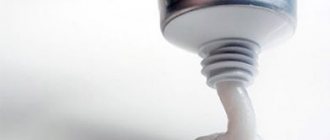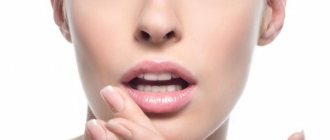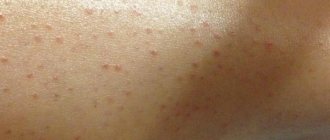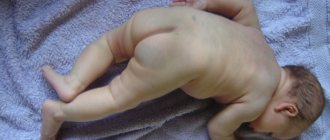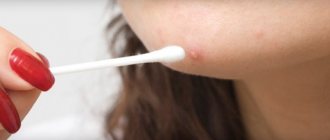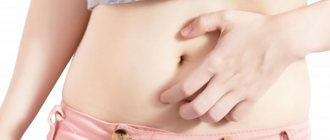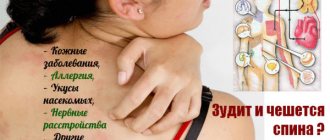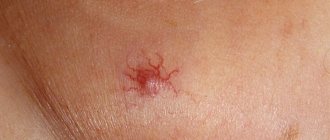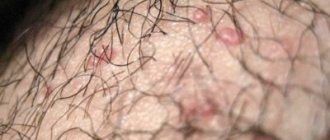Possible causes of acne on the legs
Small pimples on the lower extremities occur in people at any age. They can be transparent or filled with cloudy contents, itch or cause no discomfort. In the latter case, blisters on the legs can last quite a long time, especially among representatives of the stronger half of humanity. After all, if for women any rash on the skin is a serious problem, then men, on the contrary, may not even notice single pimples on their legs.
What are the causes of acne on the legs?
- irritation after shaving;
- clogged pores;
- avitaminosis;
- hormonal imbalance;
- allergy;
- skin diseases;
- infection.
Acne on the legs does not always indicate the development of a serious disease. The reason may be a temporary imbalance in the body or a violation of the protective properties of the skin. After eliminating the source of the problem, such acne goes away on its own without treatment.
Measures to prevent diseases that cause rashes on the feet
- Some of the diseases described are autoimmune. This means that they are not contagious, and the cause of their occurrence lies within the body. Therefore, if such diseases were observed in parents, then it would be useful to be on the safe side. Learn to control your emotions, perhaps even enroll in thematic courses. Because the provocateur of such rashes is stressful situations, which are always impossible to avoid. But you can learn to respond to them without harming your health.
- Other types of diseases progress against the background of decreased immunity. Therefore, a course of vitamins in the off-season, proper nutrition, sports, healthy sleep, clean water, and the elimination of bad habits are the key to strong immunity. Even if it fails to resist the onslaught of bacteria, it will significantly ease the course of the disease.
- Elimination of allergens. An allergy is an individual reaction and can occur to any product or care product. But a number of foods, chemicals and cosmetics are known to be allergens. Avoid heavily colored and scented creams, deodorants, foot talcs and shower gels. Do not walk barefoot in places where there are aggressive chemicals. Refrain from “chemical” food and consumption of large amounts of products - classic allergens: citrus fruits, chocolate, red berries, honey.
- Treat bites, cuts, scratches—any damage to the integrity of the skin of the feet and toes—at home with antibacterial agents.
- If the disease has already taken you by surprise and the appearance of acne is accompanied by itching, trim your nails so as not to transfer the infection or fungus to healthy areas of the body.
- Give up bad habits. Provoking factors for triggering the mechanism of many autoimmune diseases are alcohol and smoking. Lack of sleep and nervous tension also aggravate the situation.
READ ALSO: Foundation for problem skin: rating of the 5 best products
In public places (swimming pools, beaches, saunas, showers in a sports club), do not walk barefoot and do not use other people’s towels, brooms, or washcloths.
Video about eczema, one of the causes of rashes on the feet
Pimples after shaving
The most common cause of small blisters on the legs is irritation after shaving. Such pimples appear mainly in women who prefer home hair removal methods. Small spots on the legs may be completely transparent or filled with pus. Pimples itch, causing significant discomfort just by their appearance. There is no need to talk about a cosmetic defect. No woman would be happy to find small watery blisters on her legs after shaving. For obvious reasons, this problem practically does not occur in men.
How to get rid of acne on legs that occurs after shaving? Immediately after the rash is detected, the skin should be treated with antiseptic agents. These can be various pharmaceutical preparations containing salicylic acid and other elements. If an infection occurs, treatment with antibacterial ointments may be required.
Advice
If pimples on your legs contain pus, consult a doctor immediately!
To prevent acne after shaving, you should follow certain rules.
- Before you start epilating, be sure to moisturize your skin.
- Use special gels when shaving.
- Before you start epilating, be sure to moisturize your skin.
- Choose a convenient shaving machine.
- Clean the machine thoroughly after epilation.
- Shave your legs only in the direction of hair growth.
- After shaving, be sure to moisturize your skin with special products.
Pimple rashes on toes, causes and treatment methods
No person is immune from the appearance of pathogenic elements. Pimples, like various rashes, can form in different parts of the body, causing a lot of inconvenience and sometimes pain.
In some cases, acne spoils a person’s appearance, causes a feeling of self-doubt, a desire to be alone, but at the same time does not pose a serious danger to the body, but is only a cosmetic defect.
But some types of acne can be symptoms of quite serious diseases, including acne on the toes.
Types of acne on toes
Most experts divide acne on the toes into several main types, in particular:
- Blackheads and comedones that form in the pores and expand them as the contents increase. Such formations appear in most cases due to dysfunction of the sebaceous glands, skin contamination, improper or insufficient care,
- Milia, which are small bumps on the skin that are practically invisible in a calm state and do not cause pain,
- Papules that form in areas of skin inflammation, which are red, inflamed pimples without purulent contents,
- Pustules, which are, in fact, the second stage of papules maturation, since pus forms in them, which must be drained out,
- Blisters, which are a vesicular rash with elements of various sizes containing liquid inside,
- Nodules that form in the subcutaneous layer, increasing in size as the inflammatory process develops. Such elements are often accompanied by pain and redness of the skin, including around the pimple.
As a rule, people perceive the appearance of acne on the face or back more calmly, since such formations in these places can be called familiar and quite frequent.
At the same time, acne on the toes or hands causes serious concern and anxiety for many.
In most cases, watery pimples, classified as blisters, form on the toes, which do not always disappear on their own.
Such rashes can be accompanied by various unpleasant symptoms, in particular, burning, itching, redness of the skin, inflammation, and pain.
Causes of acne on toes
There are several common causes of acne on the skin of the toes. As a rule, in most cases, rashes in this area are observed with:
- An allergic reaction to certain irritants, including foot washes or synthetics if they are added to socks,
- The presence of colds,
- Severe and prolonged hypothermia of the body,
- The presence of hormonal imbalance,
- Vitamin deficiency of varying intensity,
- Wearing uncomfortable or tight shoes, as well as socks that are the wrong size or contain synthetic fibers,
- Dyshidrosis,
- The presence of disorders in the functioning of the nervous system,
- Infectious diseases,
- Fungal skin infections
- Improper foot skin care.
Allergic reaction
Often, watery pimples between the toes are the result of a common allergic reaction, and the irritants can be different.
These may be certain foods that cause systemic allergies, when the rashes spread over the entire surface of the body and between the fingers, including.
An allergen can be soap or shower gel, as well as other products used to wash the feet or body, cosmetics, deodorants, creams and various skin care products.
Quite often, synthetics act as an allergen, which today is added to many fabrics, including socks, tights, knee socks, stockings and other items of clothing for the legs. Washing powder or fabric softener can also cause an allergic reaction.
An allergen may not be a specific drug or product, but harmful substances added to it, which is why it is so important to choose natural skin care products and food products.
Hypothermia of the body
Watery pimples on the toes often appear due to hypothermia, but they almost always disappear on their own provided that you properly care for the affected skin and follow basic hygiene rules.
If hypothermia was severe or prolonged and intense and numerous rashes appeared on the toes, then this condition is called cold allergy. In this case, you need to contact a specialist to get adequate help.
Colds
When any colds appear, the entire body weakens, since the human immune system is forced to direct all its strength to fight the disease and the virus that caused it.
As a result, the protective functions and immunity are weakened, as a result of which acne can appear in different parts of the body, but, as a rule, such manifestations are temporary and go away on their own after recovery.
Avitaminosis
As a rule, a lack of vitamins in the body is observed from late autumn to late spring, when it is not possible to eat fresh natural vegetables and fruits rich in essential vitamins and other valuable components.
When vitamin deficiency occurs, it is the skin that is the first to be affected, since all the vitamins that come into food are spent on the way to the needs of internal organs and basic systems, while the skin gets practically nothing. Therefore, during the autumn-spring period, acne often appears on the face and body, including the toes and fingers.
Hormonal imbalance
Such a condition can be natural, occurring during certain periods, for example, during puberty, when a real explosion of hormones occurs in the human body and the background is established.
In addition, hormonal imbalances can be observed in women during menopause, pregnancy, breastfeeding and during the normal menstrual cycle, which also affects the condition of the skin in a far from positive way and often leads to the formation of acne.
In some cases, hormonal imbalance is a symptom of certain serious diseases and disorders.
Acne due to hormonal imbalances can appear in different parts of the body and during the treatment of various diseases with hormonal drugs of the oral category or external use.
If pimples between your toes appear due to hormonal imbalances, then to eliminate them you need the help of a qualified specialist, so you should immediately consult a doctor.
Uncomfortable shoes and clothes
It is very important to select items of clothing for your feet and shoes correctly, in accordance with a certain size, taking into account the structural features of your feet.
In addition, shoes should be appropriate for the season, so you should not wear boots in summer or light shoes in cold weather. The same rule applies to socks, stockings, tights and other types of clothing.
Such items must be made of high-quality cotton, without any synthetic admixture, and have the correct size and thickness, according to the season.
Warm clothes in hot weather contribute to increased production of sweat, which often leads to the appearance of a large number of watery pimples on the toes and between them, while a fungal infection often penetrates into such formations, since in such a situation there are optimal conditions for its development.
Dyshidrosis or dropsy
With this disorder, a large number of small red bubbles filled with liquid appear on the skin of the toes and between them, which burst at the slightest contact with any objects. This condition is accompanied by quite intense itching, and various pathogenic microorganisms can penetrate into the open wounds that remain at the site of burst blisters.
The causes of dyshidrosis can be different, but most often, the factor in the development of this disorder is stress, severe emotional stress or nervous shock.
Infectious diseases
This includes various ailments caused by the penetration of infectious and other pathogenic microorganisms, accompanied by the appearance of rashes, such as scabies, chickenpox, fungal infections and other lesions. Such conditions should be treated by using special medications, which can only be prescribed by a doctor.
In addition, acne on the toes can also appear due to frequent nervous disorders, as well as due to improper skin care or simple lack of personal hygiene.
It is also important to remember that acne between the toes and on their surface can appear not only in adults. Often, a similar problem is observed in children of different ages and for various reasons, which also requires mandatory attention and adequate treatment prescribed by a doctor. Therefore, if you find acne on your child’s toes, you should immediately consult a doctor.
Pimples on big toe
As a rule, such a disorder occurs when wearing tight or uncomfortable shoes, when the big toe is subjected to constant pressure and friction. First, a red spot forms on the surface of the skin, and gradually watery pimples or calluses, filled with liquid and accompanied by itching, burning and pain, begin to appear inside it.
Such formations should not be pierced or attempted to be squeezed out. As a treatment, it is necessary to change shoes to more comfortable and suitable size ones. In this case, to alleviate the condition and eliminate formations, you can apply Vishnevsky ointment to the damage or apply pieces of aloe vera leaves.
It is very important not to leave acne on the toes without attention and adequate treatment, so if such rashes appear, you should consult a doctor. Only a specialist will be able to accurately determine the cause of the disorder and prescribe the correct treatment that is adequate to the condition and give general necessary recommendations to prevent the appearance of such formations in the future.
Source: https://za-rozhdenie.ru/zabolevanie-kozhi/pryshhi-na-palczah-nog
Clogged pores
Red pimples on the legs can appear when the pores on the skin become blocked. This situation occurs among women who prefer to wear nylon tights and narrow boots with high tops. In men, the cause of leg rashes lies in the use of low-quality synthetic underwear. Such pimples itch and are often complicated by the development of infection.
These rashes can be removed with the help of antiseptic creams and ointments. To prevent pimples on your legs from appearing again, you should review your wardrobe and get rid of all clothes made from low-quality fabric. If the rash does not go away after changing your underwear, you should consult a doctor.
Pimples of dropsy have appeared on the feet and are itching
Skin rashes occur for various reasons. The most likely occurrence is an allergic reaction. It can be, as they say, with or without reason. For example, for a new brand of powder or tea with additives.
Even if you ate something new and tasty, it is quite possible to end up with red pimples on your shin or knee.
But why do watery pimples appear on the legs? Can this be called an allergy and how can such a misunderstanding be resolved? In fact, blisters occur not only as an allergic reaction, but also due to chemical or sunburn, as well as due to uncomfortable shoes.
It is impossible to say that a blister is dangerous. But after it is damaged, when the thin skin bursts and the liquid flows out, an unpleasant phase begins. After all, now any microbes and bacteria can get into the wound. In turn, they give impetus to the development of diseases and infections.
1 Causes of blisters on feet
Water pimples on the legs can be a sign of concern. The main thing is not to panic. And consider very clearly:
- location of the rash. This could be the foot, fingers, ankle;
- appearance and size. They may differ from each other;
- presence of water and fullness of liquid;
- presence of odor;
- painful sensations.
Water pimples on legs can be a sign of concern
Based on the information received, a clearer picture of the disease is already being created. The reasons for this phenomenon are:
| cause | description | treatment |
| Fungal infection | Infection with mycosis or onychomycosis occurs wherever there is a large crowd of people. Even in a store in the summer, no one is safe from bacteria getting on bare areas of the body. | After identifying the type of fungus (it is not always possible to determine on your own), dosage forms are selected. It is advisable to carry out a series of measures of two therapies |
| Allergy | Not only any household product can cause rashes of this kind. This also includes sprays and varnishes, nail creams and foot powders. | Most often, it is enough to stop taking creams or other remedies. Plant-based baths are recommended as an aid to quickly remove the problem. |
| Bites | Often such marks remain after the bites of small midges that live under bushes and trees. | Lubricate with creams that relieve inflammatory processes on the skin |
| Burns | Sunbathing in the sun can cause your entire body, including your legs, to become covered in blisters. This also includes chemical and household burns. | Use of creams. Designed to eliminate and relieve pain. For example, Boro plus |
| Shoes | Do not confuse small blisters with calluses. New shoes may be made of low-quality material or expired glue was used to glue parts together. | Use baths and lotions from folk recipes. Urgently send the shoes to a landfill or burn them |
Need to know! When buying shoes in markets and stores, you should carefully study the purchase. Feel free to smell things. Also, always try on wearing socks or tracks. This way you can prevent fungal infection. After purchase, treat with sprays for preventive purposes.
2 Treatment process for blisters
For each disease or condition, specific methods and methods are used to remove the problem. The most common mistake most people make is picking or piercing such pimples.
If dropsy pimples appear on the feet and itch, then piercing and bursting them will lead to serious consequences. Therapy in such cases is delayed.
You can also get infected not only with fungus, but also with more dangerous diseases. For example, sepsis.
By the way, this form of blood poisoning also manifests itself initially in the form of acne. They itch and increase in size. A fever appears, and after an abscess, the wound opens.
Allergies can cause an increase in body temperature. Only, unlike sepsis, the increase in degrees is insignificant, and the abscesses do not increase.
With the right approach to therapy, allergic wounds heal within two days.
Only a doctor can determine the cause of watery acne on the legs.
To understand what you are faced with, it is best to contact a dermatologist to study and identify the cause of the rash. Especially if there is pain, burning and fever. The doctor will advise and prescribe the necessary medications. It is only possible to fight the fungus on your own.
But even here they carefully approach the selection of medications and folk recipes. It is advisable to combine both methods. This way a quick effect is achieved. But after therapy and removal of the rashes, you must adhere to certain rules.
Most often, due to their busyness, specialists forget to consult patients on this matter. Therefore, they are worth remembering:
- Always have sunscreen on hand. When coming to the beach or open area, apply them immediately, and do not wait for the sun to start burning;
- If you do a manicure or pedicure, always contact a trusted specialist. It’s better, of course, to learn this art yourself. But always treat your own equipment after the procedure;
- use the same washing powder. At the moment, there are a number of manufacturers that produce hypoallergenic products. It is suitable for the whole family. To be extra sure, prepare a soap gel from brown laundry soap. Rinsing in it will prevent allergies;
- If you visit public places, always cover your feet with socks or tights. When going to swimming pools, baths or saunas, always use your own shoes (slippers, flip-flops, flip-flops);
- It's worth buying shoes not based on price, but on quality. When trying on, make sure that the pad is comfortable.
Source: https://medicskin.ru/na-stupnjah-pojavilis-pryshhiki-vodjanki-i.html
Allergic reaction
When rashes appear in adults, it is not so scary. It is much more difficult if the baby has small watery blisters. Pimples on a child's legs may be a manifestation of an allergy. Underwear and bed linen, animal hair, cosmetics, washing powder - all this can lead to the appearance of a rash. Allergy pimples always itch unbearably, disturbing the child’s well-being. The baby is worried, sleeps poorly and scratches his skin. Against the background of scratching, an infection occurs, and getting rid of such acne becomes increasingly difficult.
Advice
Eliminate the source of the allergy before starting treatment.
Antihistamines are used to treat allergies. The products are used internally in tablets and capsules, and are also applied to the skin of the feet. Allergy ointments and gels quickly relieve itching and swelling, eliminating acne in a short time. If treatment does not have an effect within three days, you should consult a doctor.
Diagnosis and treatment
First of all, you need to consult a dermatologist. For a more thorough examination, the doctor may take several tests, among which scraping from the surface of the skin is mandatory. Thanks to it, you can detect possible bacteria and fungi on it. Next, the condition of the dermis and the rashes themselves are studied using special equipment. This will help to draw a conclusion about the current condition of the affected skin area.
In the future, the dermatologist prescribes therapy and, possibly, not only medication. The treatment chosen will depend on the underlying cause of the disease. If the disease is not completely cured, but only its symptoms are eliminated, then it can develop further, and the affected area will increase, as will the degree of the disease.
Watery pimples on the feet, hands and body should not be squeezed out, as this can cause infection and leave scars.
Drug therapy
Medicines for both internal and external use are prescribed only by a doctor and self-medication can negatively affect the condition of your skin. In case of allergic reactions, antihistamines are usually prescribed, for example Suprastin, Loratadine, Cetrin, etc.
If infections occur in the body, it is necessary to take antifungal drugs and antiviral drugs. Often infections in the body appear due to decreased immunity, so immunomodulators are prescribed, for example, Viferon suppositories. For nervous disorders, sedatives are recommended.
READ ALSO: How to remove wen on the face - home use recipes
Along with internal treatment, local medications are prescribed. Usually these are antifungal, anti-inflammatory ointments, which are selected depending on the situation and diagnosis. You can also use more loyal, traditional therapy, but only on the advice of a doctor.
Traditional methods
If pimples and dropsy appear on your feet and itch, you can use some folk recipes. The most effective remedy for acne and skin irritations is aloe juice. This is a plant rich in vitamins and microelements that can be used for various dermatological problems.
To do this, juice is squeezed out of an aloe leaf and applied to the affected area. Aloe leaves can also be used as a lotion. But you need to remember that it is better not to apply aloe to healthy skin, as it can cause irritation and burns.
Calendula tincture is also a time-tested remedy. To treat the skin effectively use herbal decoctions:
- chamomile;
- sequences;
- eucalyptus;
- coltsfoot.
If there is no result or the situation worsens, you should consult a doctor.
Hormonal disbalance
Watery pimples on the legs often occur in women during pregnancy or within one to two months after childbirth. In men, this rash may appear during adolescence. The cause of acne lies in hormonal changes. If the watery blisters do not itch or bother you, you can leave them alone. Once the hormone levels are equalized, the rash will go away on its own without treatment.
Skin diseases
Small pimples on the legs also appear with some serious skin diseases. A dermatologist will be able to distinguish them from allergic or any other rashes. Such pimples do not always itch, but they can hurt and break out. If left untreated, the rash spreads along the skin of the legs, covering increasingly larger areas of the body.
Treatment of acne for skin diseases depends on the type of pathology. In some cases, antibacterial drugs are prescribed, in others, steroids or immunosuppressive drugs are used. The selection of drugs is carried out by the doctor after examining the patient and conducting the necessary examinations.
Prevention
It is advisable to control the temperature in the room you are in.
It is important that it is not hot and there is a constant flow of fresh air. This will reduce sweating, which is the cause of gland blockage. You should be careful when using household chemicals - it is better to choose a hypoallergenic powder. It is worth avoiding clothing made from synthetic fabrics as much as possible.
Proper nutrition plays a big role in skin condition. You should limit your consumption of spicy and fatty foods, as their constant inclusion in the menu increases the risk of blockage of the sebaceous glands. You also need to eat less sweets, coffee, and smoked foods. Eating healthy, natural foods with minimal processing will improve your skin condition.
Multiple acne on the legs should be treated under the supervision of a dermatologist. You can find many remedies for self-treatment, but there is no guarantee that they will help. Only a specialist will be able to reliably determine the cause and draw up a treatment plan taking into account the characteristics of the body.
Next article.
Pimples on legs are small and red
, as a rule, appear when it is damp and cold outside. The human body and skin are negatively affected by two factors at once: the weather itself and overly warm clothes, which block the normal access of oxygen. This causes the skin to stop breathing, and the pores, which become clogged with sebum, begin to become intensely inflamed. As a result, small pimples appear. The area around the knees and slightly above suffers first. Despite the fact that this happens in most cases when closed clothing is worn, it is important for the fair sex to maintain the beauty and attractiveness of their legs at all times.
Why do acne occur on calves?
The calves are considered a more resistant area of the body to the appearance of rashes, however, they are not immune to skin problems and. If small pimples appear on them in women, then most likely the cause is the regular wearing of excessively thick synthetic tights and high boots. Such a beautiful duo provokes increased sweating and skin irritation, especially after depilation. For this reason, a scattering of small red pimples appears. Hormonal imbalances are another cause of small rashes occurring exclusively in the calf area.
A lack of a certain group of vitamins in the body can lead to the formation of small pimples on the legs and sometimes with pustular contents. As a rule, vitamin A, which can be taken additionally, helps fill such “gaps.”
Cosmetics and shaving are acne provocateurs
Often the formation of small pimples in the leg area is closely related to the cosmetic products used. The sudden appearance of a scattering of such unexpected formations can be provoked by a certain toilet soap, a new shower gel, a not very high-quality or fresh cream, but it can also be. As a rule, such rashes disappear without a trace immediately after the use of the “wrong” and harmful to the skin product is stopped. If there are no other provocateurs, then there is no cause for concern.
The consequences of shaving or depilation by other means can have a negative result: pimples on the legs. The main danger in this situation is the machine. The best and safest option is a device that has a floating head. It is this type of machine that can minimally injure the skin. If even after changing the device, acne does not disappear, you should choose a different method of depilation. The laser method of removing unwanted hair is considered the safest.
Many people often experience acne on their legs when problems suddenly arise in the body.
This unpleasant phenomenon can significantly complicate the lives of people of any age. This is a symptom of various diseases of systems and internal organs. Reddish swellings and an inflamed rash appear on the surface of the skin. Small purulent pimples cover the skin of the legs.
Usually people mistakenly prefer to ignore such symptoms, considering them insignificant. However, this serious problem should not be ignored. It is necessary to find its cause and eliminate the painful processes in a timely manner. If this is not done, health problems can become seriously worse. The condition of the skin on your feet will deteriorate.
Avitaminosis
A fairly rare cause of a watery rash on the skin, but it should not be completely ruled out. In most cases, this problem occurs in people with weakened immune systems in the autumn-winter period, when fresh fruits and vegetables on the table become rare. Acne with vitamin deficiency usually does not itch and does not cause any concern. To prevent their occurrence, it is recommended to take complex multivitamins during the cold season.
Knowing why water pimples occur on the legs of men and women can help prevent their occurrence. The right choice of cosmetics, wearing high-quality underwear and daily skin care will help protect your feet from any rash.
What causes rashes on feet
Acne and other pimples on the face rarely signal problems that require immediate solutions. Typically, such rashes are provoked by factors accumulated in the body: intoxication, hormonal imbalances, and so on. Changes in the quality of the dermis of the feet and toes most often manifest themselves sharply and in an acute form. And the problems that these phenomena indicate may require urgent medical intervention. Among the provoking factors are:
- infectious diseases;
- allergic reactions, dermatitis;
- psoriasis, eczema;
- cancer;
- other.
Even a person with a medical education cannot always make the correct diagnosis based on the type of rash alone. In most cases, additional laboratory tests are required.
Allergy
The most common and most harmless cause of rash on the feet in men and women is an allergic reaction. It manifests itself as an irritating factor that affects the body both from the inside and outside. When trying to figure out what caused the reaction, don't throw away products you've used before. Indeed, for allergies, the cumulative effect also becomes important, when something that previously did not cause dermatological problems can today manifest itself as a rash. There is no point in diagnosing allergies on your own. It has many faces and can masquerade as other diseases, so it is important not to confuse it with something more serious. With allergic reactions, flaky scales, red spots, blisters and papules may appear on the feet. There may be many or one or two. Itching is also not obligatory, but a possible phenomenon.
Infectious diseases
Some viral diseases manifest themselves as rashes and “pimples” on the skin of the feet and other parts of the body in the early stages. Measles, chickenpox, scarlet fever are an incomplete list of infections that are characterized by rashes on the body. And none of them can be called harmless. Therefore, it is important to diagnose the disease in a timely manner and begin treatment. Such diseases are extremely contagious and it is unacceptable to decide how to get rid of their manifestations on the advice of grandmothers and friends. Rashes with such ailments look like red blisters or papules and may itch. Most infectious diseases are characterized by an increase in temperature, a change in the color of mucous membranes, and a deterioration in general health. Therefore, rashes are not the only symptom, but one of the first to appear. It is important not to miss the moment, pay attention to it and seek help from a doctor.
READ ALSO: A child has pimples with a white head near the anus - Question to the dermatologist - 03 Online
Psoriasis
A disease that occurs in a chronic form, which is characterized by the formation of plaques on skin surfaces exposed to friction, bending, and squeezing. Feet and toes are also at risk. The plaques can be very small and resemble pimples, but they tend to enlarge and merge with nearby lesions. The disease is characterized by alternating acute periods with remissions, but without treatment, the duration of remissions shortens and disappears. And the affected areas increase and the severity of the disease worsens. The acute phase can be triggered by alcohol, stress and other individual factors. There is currently no treatment for this disease.
Eczema
The causes of this disease have not been clarified to this day, so it is not yet possible to cure it completely. It can be provoked by: dysbacteriosis, deficiency or excess of vitamins, malfunctions of the digestive organs, kidneys, weakened immunity and other factors. Eczema spreads, most often, on the extremities, manifesting itself first as itchy redness, and then as blisters on the affected areas. The disease has several stages and types, and each subsequent one is controlled worse and worse. Therefore, timely medical intervention is necessary. The disease most often occurs in a dry form, but sometimes a weeping form occurs, causing even greater discomfort on the feet due to watery rashes.
Some types of lichen
Psoriasis is also a representative of lichen, but there are other types of this disease that are completely different from it. These include:
- Shingles. It is characterized by an increase in temperature with significant lesions, rashes in the form of many watery blisters with cloudy contents, pain and itching in the initial stages;
- Pityriasis rosea. During this disease, spots appear on the skin and rashes in the form of blisters with a red border. Sometimes they are accompanied by slight pain, but they never merge with each other, which is typical only for this type of lichen;
- Lichen planus is a non-contagious disease. Rashes in the form of bright papules are very characteristic and do not cause difficulties for the doctor in diagnosis. After recovery, red spots remain at the site of the rash for a long time.
Each type of lichen has its own treatment, therefore, even if you suspect you have one or another type of disease, consultation with a doctor to prescribe the correct therapy is mandatory.
Mycosis
This name summarizes several types of foot and toe diseases caused by fungi. The insidiousness of this illness is that it appears and disappears for no apparent reason, creating the illusion of recovery. The disease begins with peeling, often in the area between the fingers. Without treatment, it progresses to more severe forms, characterized by a blistering rash in the arch of the foot. Affects nails, changing their shape, structure and sometimes leading to their loss.
Scabies
A contagious disease transmitted by contact with the skin of a sick person. The disease is characterized by a red rash localized between the fingers, on the feet, in the genital area, on the wrists and other parts of the body. It is caused by the scabies mite, which moves under the skin, leaving passages in it. In the evening, microorganisms become more active, causing itching, which is difficult to ignore. Scratching “pimples” leads to secondary infection (for example, staphylococcus). In this case, the “pimples” become purulent and watery.
